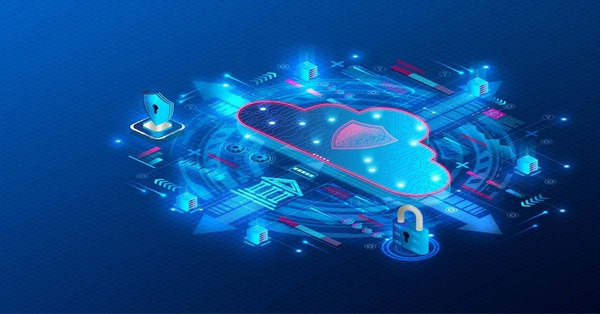
Implementing multiple security solutions has proven ineffective in recent times. More sophisticated threats have emerged to defy these solutions by taking advantage of their security gaps. The growing attack surface and sophistication of cyber attacks generate a massive amount of indicators that are complex and difficult to manage for already overburdened cyber security teams. Traditional security tools are not capable enough to win a war against modern threats.
To provide robust cyber security, enterprises need a holistic and proactive approach. Extended Detection and Response, also known as XDR, is a technology that complies with its claims to enhance detection and response capabilities in extraordinary ways, taking your cyber security to another level of invincibility.
If you are wondering, "What is XDR?" Let's get straight to it.
What is XDR?
Extended detection and response (XDR) is a security solution that executes the automatic collection and correlation of data from various security layers. XDR provides end-to-end visibility, detection, analysis, and response to threats.
How Does XDR Work?
XDR (Extended Detection and Response) is a security solution designed to detect and respond to advanced cyber threats. At its core, XDR performs the following tasks:
- Collection and Analyses: Ingest and normalizes large amounts of data from endpoints, cloud workloads, identity, email, network traffic, virtual containers, and other sources.
- Detect: Using advanced artificial intelligence (AI) and machine learning (ML), parse and correlate data to detect stealthy threats automatically.
- Respond: Sort threat data by severity to allow threat hunters to quickly analyze and triage new events, as well as automate investigation and response activities.
What Improvements Does XDR Offer?
Before XDR solutions entered the scene, point security solutions held sway. As impressive as they were, point security solutions could only function in distinct security layers. XDR is changing all of that.
Extended Detection and Response has also improved on popular cybersecurity solutions like Endpoint Detection and Response (EDR) and Managed Detection and Response (MDR). For example, while the EDR does an exceptional job of securing endpoints, XDR goes beyond them. Additionally, XDR tackles security operations center (SOC) challenges, reduces the incidence of alert overload, improves the productivity of security personnel, and lessens visibility gaps between security solutions.
XDR combines Artificial Intelligence (AI), Machine Learning (ML), and threat intelligence in a way that relieves your security team. As such, it’s able to provide the following benefits to your security campaign.
Improved Access Control
XDR limits access to your system to only the users it has approved. The solution also screens actions and discriminates against any activity that seems even remotely harmful to your system.
Detects More Advanced and Stealth Threats
XDR is meeting the need to detect ever-increasingly sophisticated threats from bad actors. XDR will flag known and unknown threats, including the notorious stealth threats. Threats that have eluded previous cyber security solutions are no match for XDR's advanced analytics feature.
More Effective Prevention and Response
XDR oversees the entire threat surface, meaning that your security team can prevent and respond to threats faster than before. Its machine learning and threat intelligence features empower your team to implement protective protocols against a wide range of attacks. This capability is a tremendous advancement from previous solutions focusing on single-threat perspectives.
Centralized User Interface
With XDR, security analysts can view threat data on one dashboard. Previously, decentralized solutions compelled security teams to alternate between multiple dashboards to understand security challenges comprehensively. Now, XDR's centralized threat data report will simplify threat response like never before.
Lowers Data Security Cost
The cost of operating several security products far outweighs the cost of XDR. Why use multiple products when one can do everything? XDR provides your security team with an all-encompassing service package that eliminates the need to spend on several overlapping products.
How do These Improvements Address Modern Security Challenges?
Even with multiple security products, cyberattacks and data breaches still happen. The challenges associated with cybersecurity have continued to evolve along with the growing sophistication of threats. These challenges include
Time Critical: XDR's ability to single out high-priority threats eliminates the time lost in responding to loads of SIEM alerts about insignificant threats.
Advance Threat Hunting: XDR's ability to identify and combat stealthy threats is a significant plus for the cybersecurity campaign. Security analysts won't have to spend more time tweaking detection rules now and again.
High Visibility: XDR’s centralized bird eye view provides clearer insights about the security posture status for in-depth analyses to prioritize and address the weak points.
These improvements will allow organizations to break the cost barrier of modern anti-threat warfare and better arm their systems against attacks.
Takeaway
There could be no end to the need to fortify your security posture. To keep your data away from malicious actors, you must stay in the know of the most efficient cybersecurity solutions. XDR, a new and prominent threat detection and response technology, is one solution.
XDR security represents a more comprehensive advancement in cyber security approaches. XDR security will provide your company with greater control over your systems, along with a robust dimension of threat detection and remediation. Now you can do away with too many security products and enjoy more reassuring protection.
With an XDR solution, your organization will take a giant leap ahead of the bad actors while saving time, personnel, and money.